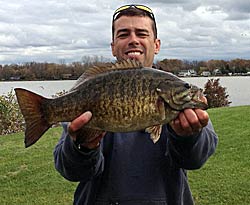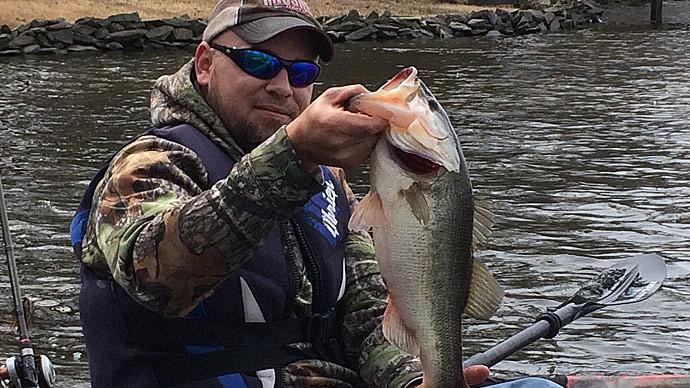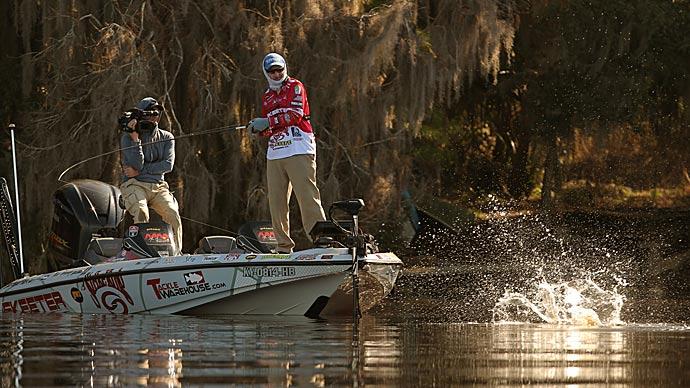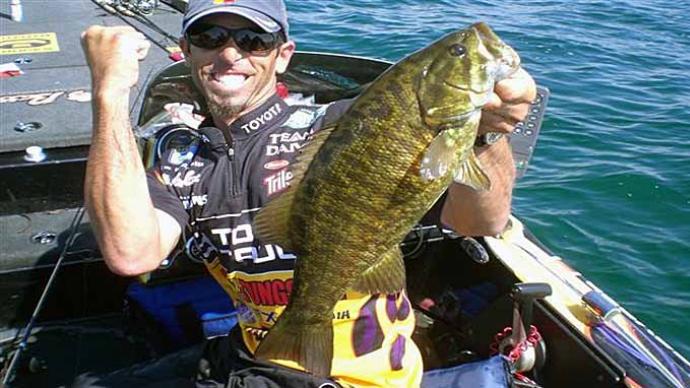
Ask any bass angler when their quarry is hardest to catch, and I am willing the answer will most likely be, "when they're suspended." The fact is when bass suspend, they're in a state of inactivity, where their only goal is to burn as little energy as possible. This means that chasing down a crankbait or diving to pick up a soft plastic offering is at the bottom of the list of things to do. This presents an interesting dilemma for the bass angler, whose lures, for the most part, are based on varying degrees of motion.
Years ago, anglers discovered through trial and error that if they planned to entice any of these super-lazy fish into striking, they would have to slow down their presentation and keep the bait in the strike zone for as long as possible. The question was how to do this.
Enter an entirely new breed of lures dubbed "neutrally suspending." These neutrally buoyant baits were, for the most part existing baits modified by various degrees of garage engineering to neither float nor sink but rather "hover" motionless at a given depth. Anglers discovered adding the right amount of weight to the right places on a floating crankbait or jerkbait, they could achieve this motionless hover with great success. This spawned the technique that is now known as horizontal jigging.
It's the same as vertical jigging, but the column turned sideways with the water. The principle of giving the fish a chance to get a good long look at that bait remains paramount in this presentation.
Now it's easier than ever to present this technique. Many lures are offered that possess this neutral buoyancy right out of the package, which eliminates the hassle of modifying existing baits. Products such as the Rapala Husky Jerk, Smithwick's Suspending Rogue, and the Suspending Bomber Long A are all examples of this specialized manufacturing. With this in mind, let's take a look at how you can apply this highly specialized technique to your bass fishing repertoire.
The big mystery surrounding this method is when should you use it? To answer that, I think it would be safe to say, "when nothing else seems to work at all." I say this because chances are, if nothing else is working, you have stumbled upon a school of suspended bass. However, there is good news here. Chances are, if you can catch one, you can catch a good portion of the entire school.
With this in mind, boat positioning will be your first concern. You will want to be to the sides of the school, rather than on top of them, for obvious reasons of not wanting to spook or break up the school. This is where a good electronics package will come into its own.
After being positioned away from the school, you'll want to make the longest casts humanly possible as the farther you can get that bait out there, the longer the retrieve, and the more time it will be down in the crucial strike zone. I recommend a seven to seven-and-a-half-foot medium-action baitcast rod paired with a high-quality reel capable of making the long throws needed for this technique.
As for the line, lighter is better. Keeping the line light makes for less of a line profile, which will allow your bait to look and act more naturally in the water. The heavy line will often interfere with the suspension depth and the overall action of the bait and can even spook the fish. I recommend a six- to ten-pound high-quality, low-stretch fluorocarbon line due to its low visibility, high sensitivity, and low stretch. Which is another point here: stretch is terrible. On those long casts, you'll want to be able to get solid hooksets and sense those light, lethargic strikes at long distances.
Your next question will be, "what bait should I be throwing?" The answer to this is "whatever you have that will closely match the actual forage base in that lake." Here is where the fly fishing adage "match the hatch" really shows its true meaning. Matching the forage base in size and color is key to making this presentation pay off. So having a good knowledge of what size the average forage is for that body of water will benefit you greatly. Your choices are certainly not limited to the massive number of baits offered by various manufacturers designed explicitly for this task. I have found the Rapala Husky Jerk and Bomber Suspending Long "A" to be the ticket when a stick bait style lure is needed. At the same time, the suspending Rapala Shad Rap is the bait of choice when a crankbait style lure is needed.
The actual presentation is straightforward once you have located the suspended school, which is the hard part in most cases. After you have made your extra-long cast, a few quick cranks will get your bait down to its desired depth, more or less depending on your lure. Once you have your bait at your desired level, short jerkbait-like twitches will make this a presentation that nearly any bass would be proud to chew on. Experimenting with the duration of the pauses between twitches will let you fine-tune this presentation to exactly what that school wants. This twitch and pause technique usually comes through with flying colors.
Another great, though the lesser-known method of presenting such a bait is to, again, crank your bait down to the desired depth, then retrieve it steadily at a painfully slow rate. Though doing this can require the patience of a heron, the reward can be well worth it. This technique can show its stuff come tournament time when nobody in the field seems to have found bass of any quality.
Though it should be noted that this method is very effective on lethargic, suspended bass, there is a place for this in the active bass repertoire. Come springtime, when a young man's fancy turns to the emerging grass beds and the hungry fish that will be cruising them, suspending baits can provide the bass angler with the edge. Using a quick rippin' style presentation once your bait has reached its suspension depth can help you pick up active fish cruising the beds with lethal efficiency, as well as help eliminate unproductive water in a big hurry. This method not only yields numbers but sizes as well, with the bonus of helping you cover a lot of water in a short amount of time. Tournament anglers take note; this technique can make great use of your practice time when it comes to eliminating unproductive water when searching for actively feeding fish.
On a final note, for those do-it-your-selfers, Storm offers several products that will allow you to modify any existing floating bait to suspend, as would a store-bought one. These are adhesive lead circles and strips that adhere to the bodies of hard baits and go by the name "Suspen-dots" and "Suspen-strips." When used correctly, they can make nearly any bait suspend nearly anywhere in the water column, depending on the configuration and the number of dots or strips used. While my experience with them has been limited, I can say that they certainly do the job, and I have several jerkbaits I keep the dots permanently adhered to. They indeed open up a whole new world of bait modification, which can sometimes be key on super pressured waters.
With this in mind, the next time the going gets tough on your favorite fishing hole, see if you can give this tried and true technique a shot. Who knows? Maybe the reward will come in the form of a conversation-worthy stringer of bass.




